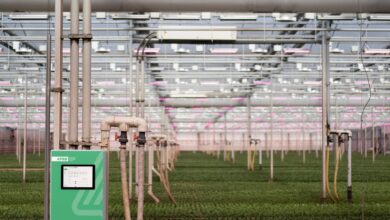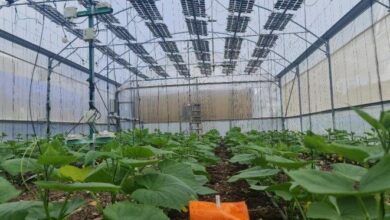A Data-Oriented Study on the Dispersal of Agricultural Pests

Yafit Cohen and Eitan Goldshtein, Agricultural Engineering Institute, Volcani Institute
yafitush@volcani.agri.gov.il; eitan@volcani.agri.gov.il;
The development of pests in agricultural crops in time and space is influenced by many factors and the interrelationships between them. Among them are abiotic factors, e.g., temperature and moisture, and biotic factors, e.g., host sensitivity and crop type. Pest dispersal is also affected by various landscape-scale factors, such as landscape heterogeneity and the degree of connectivity of hosts. In addition, pest populations are affected by the agricultural practices employed and the management decisions made by each grower, such as selection of crop type, source of the seedlings and the time between cropping cycles. The agro-biological system is even more complex because there is a transition of pests between agricultural areas and nearby natural and inhabited environments. All this suggests that studying the processes affecting the distribution of pests in space and over time is a great challenge.
A leading experimental method utilized to explore the dispersal behavior of insects is called mark-recapture. In the mark-recapture method, a portion of the insect population is captured in what is assumed the source site (e.g.,a garden in a settlement or a crops field), marked, and released. Later, another portion will be captured in what is considered the sink site (e.g., a crop field).If some of the re-captured insects are marked it is a direct evidence of migrationfrom the source to the sink while its rate can be quantified from calculating the proportions between the marked and the general captured populations.This approach is usually limited to the study of individual variables andadditionally in time and space.
At the same time, the ecoinformatics in agricultural systems approach has evolved in which the overall biological system can be studied using numerous alphanumeric and geographic data collected by farmersand their labor force in their routine field work. The advantage of this approach is significant when large and diverse data is accumulatedover relatively long time periods and from relatively large areas. The analysis by this approach makes it possible to characterize the factors that influence the dispersal of the pests and to gain insights into their dynamics in the “real world”.
The ecoinformatics approach is not new but its use has intensified in recent years with the expanding use of sensors in the fields, agricultural management systems, digitization of the data collected, remote-sensing data, Geographical Information Systems (GIS), and technologies to integrate historical databases of different farmers from relatively large areas.Despite its advantages, the major drawback of the ecoinformatics approach is that it produces associations between monitoring pest data and environmental factors and thus not direct evidence of the dispersal.
The difference between mark-recapture and the ecoinformatics findings can be likened to the difference between physical and circumstantial evidence in crime scenes. Additionally, databases of monitoring data of pests, rarely exist, since data acquisition is labor-intensive and the data setsthat arecollected by surveillance officers areused for immediate plant protection actions and most of themarenot stored or available.
In Israel, dispersal behaviors of several pests were studied utilizing the ecoinformatics approach. In this framework,studies of two pest-host systems will be shortly described: Egyptian broomrape in tomatoes and
Mediterranean fruitfly in citrus. In addition, high throughput cost-effective approach for monitoring flying insects will be presentedas an enabling step toward “big data” agricultural entomology.
Egyptian broomrape (Phelipancheaegyptiaca; Orobanchaceae) is one of the main threats to tomato production in Israel. The seed bank of P. aegyptiaca rapidly develops and spreads in the field. The aim of this study was to reveal the effects of two major internal infestation sources: crop rotation and infestation history; and one external source: proximity to infested tomato fields; on infestation of P. aegyptiaca in processing tomatoes.
Ecoinformatics, spatial analysis and geostatistics were used to examine these effects. A regional survey was conducted to collect data on field history from 238 tomato fields between 2000 and 2012, in a major tomato-growing region in Israel. Multivariate logistic regression in the framework of generalized linear models (GLM) has demonstrated the importance of all three variables in predicting infestation in tomato fields. The parameters of the overall model indicated a high specificity between tomatoes and P. aegyptiaca, which is potentially responsible for aggravating infestation. In addition, P. aegyptiaca infestation levels were intensively mapped in 43 fields in the years 2010–2012.
Geostatistical measures showed that 40% of the fields had clustered infestation spatial patterns with infestation clusters located along the fields’ borders. Strong linear and negative relationships were found between infestation level and distance from a neighboring infested field, strengthening the role of infested tomato fields in P. aegyptiaca spread. An experiment specifically designed for this study showed that during harvest, P. aegyptiacaseeds are blown from an infested field to a distance of at least 90 m and may initiate infestation in neighboring fields. Integrating current knowledge about the role of agricultural practices on the spread of P. aegyptiaca with the results of this study enabled us to propose a mechanism for the spread of P. aegyptiaca. Given the major effect of agricultural practices on infestation levels, it is assumed that the spread of this weed can be suppressed by implementing sanitation and using decision support tools for herbicide application.
The Mediterranean fruit fly, Ceratitis capitata (Wied.) (Diptera: Tephritidae)(medfly), is a major pest among all varieties of citrus. Despite advances in recent years, knowledge about the effects of various variables on the spatiotemporal spread of the medfly is still limited. The goal of this study was to characterize the effects of various local and landscape variables on the population density of medfly in citrus orchards in Israel, utilizing the ecoinformatics approach. Data were collected during three citrus growing seasons (2014-2016). The medfly population data consisted of a weekly inspection of ~ 2300 traps.
Thirteen potentially explanatory variables believed to influence the medfly populations were quantified. The contributions of the explanatory variables were analyzed using GLM. Results show that the medfly population is affected by both local and landscape variables. Further analysis was focused on the data from November (representing the fall peak) and April (representing the beginning of the spring peak).
The major findings were: medfly population was higher in plots that were closer to inhabited areas, presumably due to their proximity to private gardens; the medfly population was negatively affected by the proportion of the surrounding crop; larger plots with lower perimeter-to-area ratio and plots inside large citrus clusters had smaller populations of medflies; variety had inconsistent effect; and elevation showed inverse response (positive in November and negative in April). Additionally, during the fall peak, the medfly population was positively affected by the proportion of the surrounding deciduous orchards. The results of this study demonstrate that the medfly populations in citrus are affected by the composition of the external landscape. Thus, similar to other studies, this study encourages the adoption of area-wide integrated pest management protocols.
Continuous monitoring of population fluctuations is important to improve the ecology studies and the control of economic pests. In this studyan automatic trap was developed for sequential medfly remote monitoring. A new cylinder-shaped trap was designed, and optical sensors specifically created for detecting and counting dead or stunted Medflies were embedded in it. Field tests were conducted to estimate the trapping efficiency, accuracy, and over-counting of the medfly. Automatic Traps (Medfly-ATs). Medfly-ATs and conventionalSteiner traps were placed in commercial citrus orchards over five different periods between the years 2013 and 2015.
The Steiner lure traps are composed of a chemical attractant for male medflies and insecticide to attract and kill them. They are used for monitoring the population distribution of medfly in citrus orchards in Israel.The medfly-AT and conventional Steiner trap were found to have similar trapping efficiencies under field conditions.
The accuracy of the medfly-AT counts ranged between 88% and 100%; the absolute over-counting in all experimental sites and periods was three flies. Results of an informal experiment conducted in a commercial orchard showed that daily monitoring using the medfly-AT device holds promise for reducing insecticide applications, but extensive in-field experiments should be conducted to test it. Nowadays, the automatic traps were further improved and are under commercial production by Agrint LTD.
Their performance is undertaken in commercial orchards, and we expect them to be widely installed in the Israeli orchards by the end of 2022. Our vision is to establish a national monitoring system offruit-flies in Israel. The first step to accomplish it is to establish it for medfly monitoring in citrus. A national fruit-flies monitoring system will improve their control, will reduce their damage and the use of pesticides. It will be also an enabling step toward “big data”-fruit-flies-entomology. The fruits from these ecoinformatics studies will be used further to improve spatial decision support systems for their control.
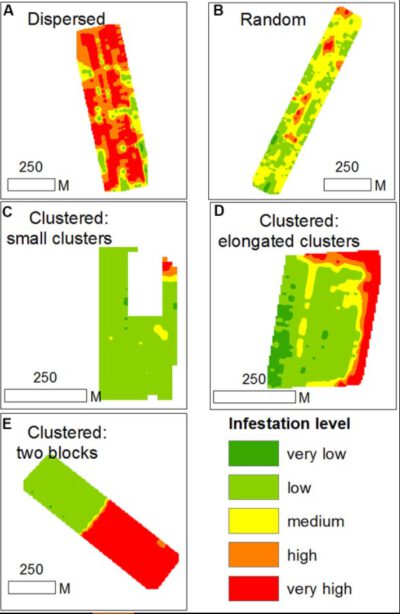

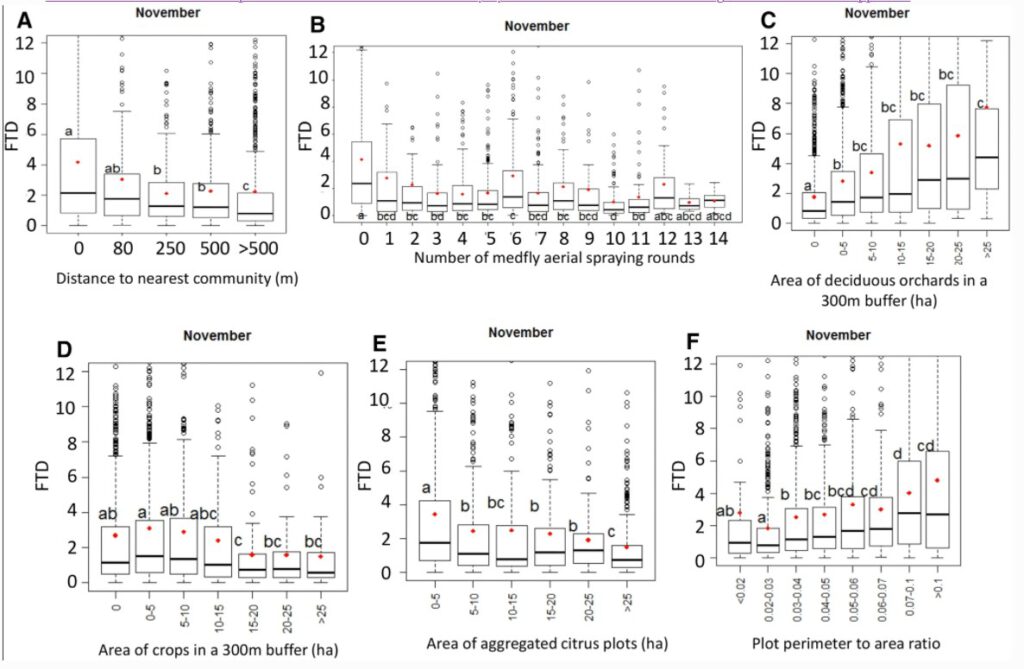
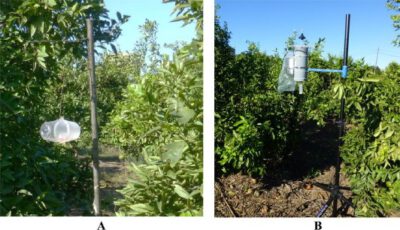
The studies were financed by the fund of Chief Scientist of the Israeli Ministry of Agriculture.
The following papers are the source for the description of the studies in this framework as well as mentioning ourcollaborators:
Cohen, Y., Roei, I., Blank, L., Goldshtein, ET., and Eizenberg, H. 2017. Spatial Spread of the Root Parasitic Weed Phelipancheaegyptiaca in Processing Tomatoes by Using Ecoinformatics and Spatial Analysis. Frontiers in Plant Sciencehttps://doi.org/10.3389/fpls.2017.00973.
Goldshtein, E., Cohen, Y., Hetzroni, A., Gazit, Y., Timar, D., Rosenfeld, L., Grinshpon, Y., Hoffman, A., and Mizrach, A. 2017. Development of an automatic monitoring trap for Mediterranean fruit fly (Ceratitis capitata) to optimize control applications frequency. Computers and Electronics in Agriculture 139, 115-125.
Krasnov, H., Cohen, Y., Goldshtein, ET., Mendelson, O., Silberstein, M., Gazit, Y., Blank, L. 2019. The effect of local and landscape variables on Mediterranean fruit fly dynamics in citrus orchards utilizing the ecoinformatics approach.Journal of Pest Science, 92, 453-463.


